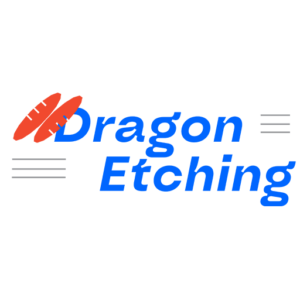Copper-nickel alloys, also known as cupronickel alloys, are a family of materials that combine copper and nickel in various proportions. These alloys exhibit excellent resistance to corrosion, particularly in marine environments, making them suitable for a wide range of applications, including marine components, electrical connectors, and heat exchangers. Chemical etching of copper-nickel alloys can be used to create precise patterns, markings, or designs on their surfaces. Here’s a guide on commonly used methods for etching copper-nickel alloys and how to set important parameters for effective etching:
Commonly Used Copper-Nickel Alloy Etchants
- Ferric Chloride (FeCl3)
Applications:
- Marine Components: Copper-nickel alloys are frequently used in marine environments due to their resistance to seawater corrosion. Etching can be employed for quality control and marking.
- Electrical Connectors: These alloys are used in electrical connectors and terminals. Etching can be used for surface treatment and identification.
Setting Parameters:
- Temperature: Copper-nickel alloy etching with ferric chloride is typically performed at temperatures ranging from 35°C to 45°C (95°F to 113°F).
- Concentration: A common concentration is around 40-45% ferric chloride in water. Ensure thorough mixing for consistent results.
- Etching Time: The etching time can vary based on the desired result and the thickness of the copper-nickel alloy, ranging from minutes to several minutes.
- Agitation: Utilize an agitation mechanism within the etching equipment to maintain even etching and prevent the accumulation of byproducts.
Setting Parameters in a Copper-Nickel Alloy Etching Operation
For an effective copper-nickel alloy etching operation using ferric chloride as an example:
Temperature:
- Confirm and set the etching machine’s temperature control settings within the specified range of 35°C to 45°C.
Concentration:
- Measure the required amount of ferric chloride accurately and mix it with water to achieve the desired concentration (e.g., 40-45%). Use calibrated instruments for precision.
Etching Time:
- Determine the appropriate etching time based on the thickness of the copper-nickel alloy and the desired pattern or surface modification. Start with a short duration and adjust as needed.
Agitation:
- Ensure that the etching equipment is equipped with an agitation system to maintain proper mixing of the ferric chloride solution throughout the etching process.
Safety:
- Prioritize safety when working with ferric chloride. Always wear appropriate personal protective equipment (PPE) such as gloves, safety goggles, and lab coats. Maintain a well-ventilated workspace with safety showers and eyewash stations.
Ventilation:
- Maintain proper ventilation to dissipate fumes and gases generated during the etching process. Use a fume hood if available.
Waste Disposal:
- Dispose of used etchant solutions following local regulations, as ferric chloride waste is often considered hazardous. Proper handling and disposal are essential.
If you have an Copper-nickel etching project that you need help with, please contact us

